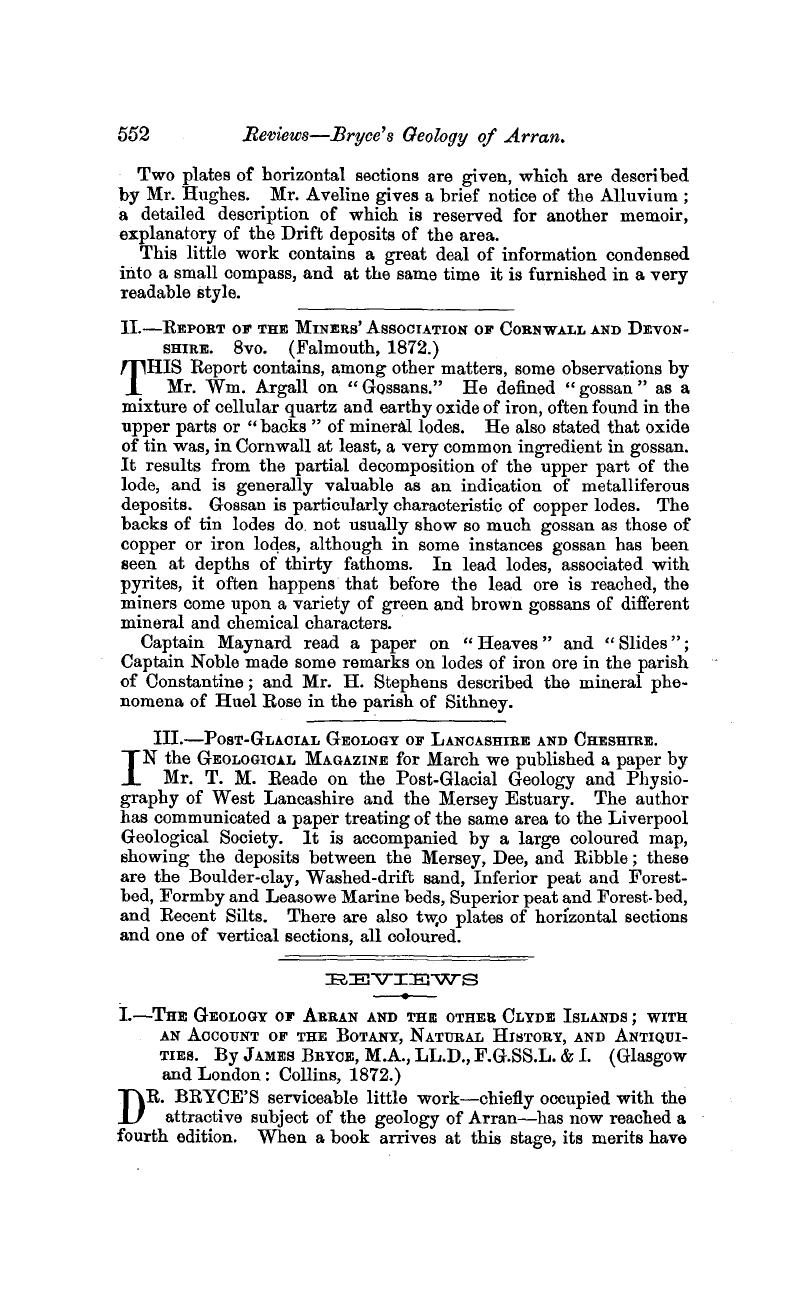No CrossRef data available.
Published online by Cambridge University Press: 01 May 2009

1 Yet even here a curious mistake has lately been made. In the short article on Arran in Chambers's excellent Cyclopædia, we find it stated that “Lias and Oolite lie on the Mica-slate.” Well may the student of Arran geology exclaim—
“Far ha'e I travelled and meikle ha'e I seen,
But Lias on the Arran slates never saw I nane!”
page 556 note 1 Geological reading at the best is not free from difficulties, but in the page from which we have just quoted we encounter this formidable sentence, “The elevation of the [shell] bed above the present sea-level expresses the amount of former depression below that level.” After being fairly baffled with this, and giving it up as a geological riddle, we were relieved to find at p. 190 an acknowledgment that the idea here is “obscurely expressed.” But why not have “reformed it altogether” in passing through the press ? Another and more serious mistake, which ought surely to have been corrected before publication, is that relating to the height at which the anchor was found in Glenrosa. The statement appears without any note of correction at p. 55, and it is only when we reach p. 166 that we are informed it was totally erroneous! A few other corrections are needful; and some of the illustrations (e.g. fig. 21. an “Anticlinal axis”) are open to much improvement,—in fact, should either be redrawn or withdrawn altogether.